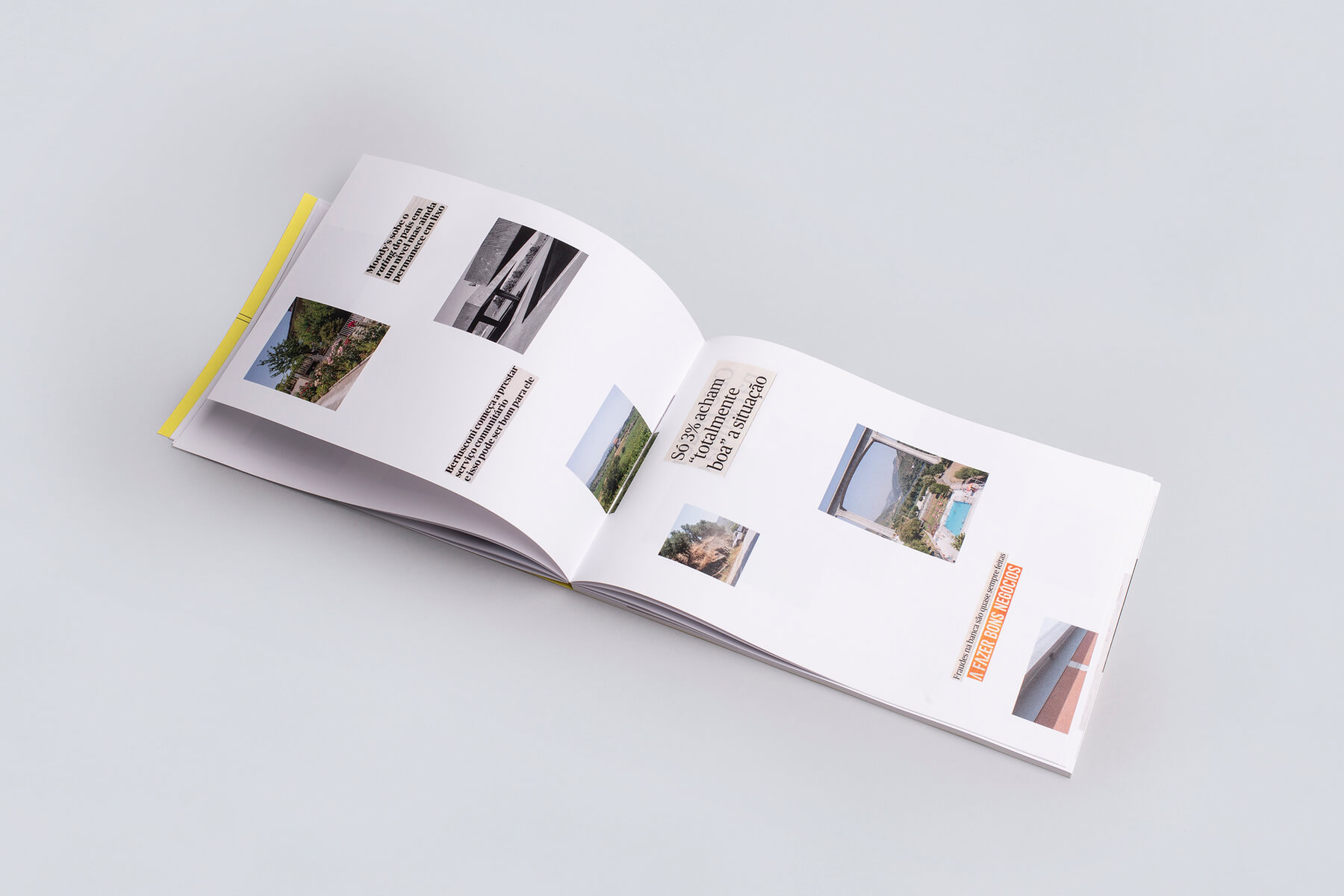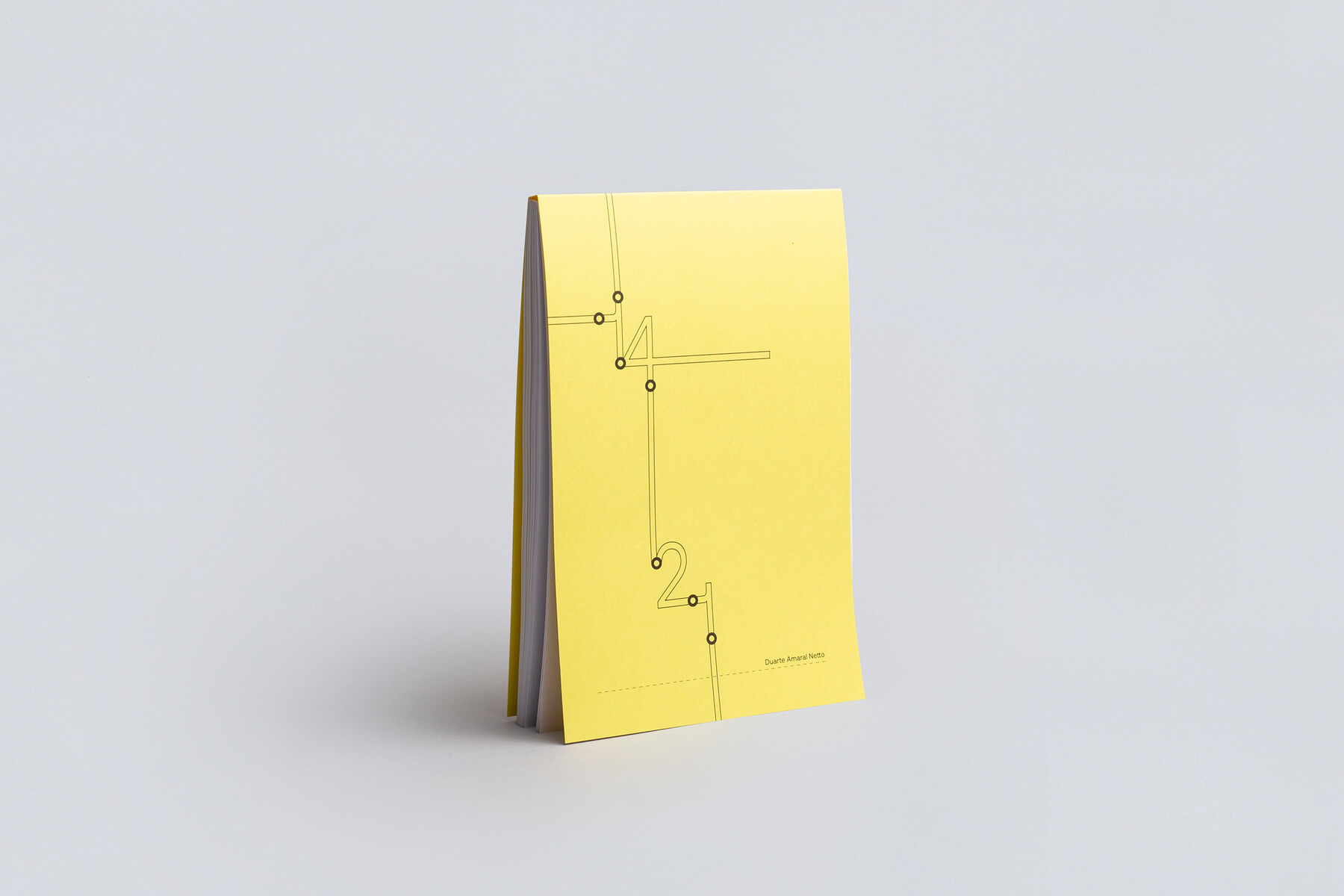Catalogue of the exhibition 14-21, a solo exhibition by Duarte Amaral Netto, which was on view at Galeria da Boavista between July 13 and September 26, 2021. The exhibition was curated by João Seguro. This edition contains a preface by Tobi Maier, and essays by João Seguro and architect and researcher Ana Gago, as well as photographic reproductions of the exhibited works.
“The exhibition, as well as this book, can thus be considered as documentation of the past decade, an encouragement that change is possible, and as an invitation to collaboratively develop the tools that help us shape a sustainable, inclusive and diverse city, which does not tender itself dependent on any on type of economy.”
– Tobi Maier
“But what seems to really interest Amaral Netto is the phraseology of the territory (to use a term borrowed from Roland Barthes). Phraseology, as an analytical practice, enables one to single out and characterise the elements that make up a sentence or a text, to question its morphology, to attempt to decode the specificities of a certain use of words and of the rules that bring them closer together. By traversing the landscape that unfolds before him like a kaleidoscope of words and that synthetises the myths, actions and memory which the landscape entails as well as the new actions that remake it, the artist speculates on mythical and circumstantial qualities. These allow the viewer to observe the impact of the perfidious socio-political nature of the present, which shamelessly affirms itself in the balance we once recognised in the contrasting pairings of country/city, centre/periphery, so typical of 19th-century societal organisation.”
– João Seguro
“Ever since the philosopher and sociologist Henri Lefebvre created the concept in the 1960s, the Right to the City has been the object of ongoing debate both within and outside the academic milieu. In contrast to other Marxist views on the path to social justice, such as work-based class struggles based, Lefebvre believed that change could come through the daily collective actions of those who inhabit the urban space. However, the Right to the City is not a closed concept – it is open to multiple readings and practical implications. The authors who have examined this issue would seem to agree on two aspects. Firstly, that the Right to the City is not, and should not be interpreted as a legal right per se but more as an imagined goal towards socio-spatial justice. Secondly and more importantly, that the Right to the City is as much as a cry as it is a demand: a cry against current socio-spatial injustices and a collective desire for change.”
– Ana Gago





